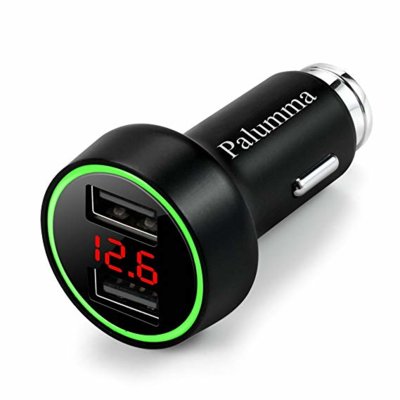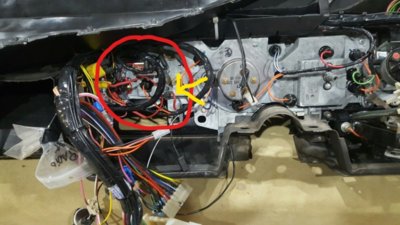I dont care about stock look but care more for clean power. I wondered why the alt went to the starter relay then to the battery.
In this case to be safe ill bypass the ammeter and wire the alt to battery. I'd like to be able to still run the ammeter but still have clean power just to have the gauge do something but an underdash voltmeter is something i can do also.
The factory ran the 100 amp feed wire to the starter relay because it's the shortest and easiest path (about a 4 foot run). The issue is the alternator is on the right and the battery is on the left. The factory would either had go around the radiator (which is a 7 foot run), or across the firewall and down the fender, then back to the starter relay (which would be down right crazy). They could go over the engine, if the car had a small block, but a big block has the plug wire on the front which would cause all sort of issues if the feed wire was ran near them.
The ammeter measures the different of amps from the battery and what the alternator puts out. In my setup, I'm already at 90 amps with everything going and I plan to install three more fans (oil, p/s, and a pusher), along with a big car-audio system.
If I had an working ammeter, that sucker would be pegged deep into the C zone and never move. So, it's 100% useless. In fact, the battery doesn't have enough juice for my car to run for more than a few seconds, a minute tops. It has just enough juice to spin the motor over before the alternator kicks in (it doesn't start working until it spins 1500 rpm which is why the pulley is so small). I monitor volts via the Sniper display screen.
I wasn't going to show my setup or talk about it much, because I think it's could be considered bragging, but I think it's relevant since you want to wire to the battery. On the right side, you'll notice the 4 awg cable ran off the alternator (it's cover in black Tech-Flex) going through the core support and a large service loop on the left of the car. The wire is tucked neatly under the core support. There is also a 4 awg ground for the alternator going directly to the frame. This is to insure a good ground for alternator, again to reduce AC whine. There's a new 4 awg cable to the starter, and 3x 10 awg running to the fuse/relay box inside the left front fender. The 8 awg to the starter relay is a little harder to see, but it's in there and ran off the battery in the bundle of smaller wires and then into the harness near the bottom of the battery. The two 4 awg ground cable is ran to the shut off, with a 4 awg to the engine and one to the frame. The ground bolts are carriage bolts, with two nuts. The alternator is the 220 amp PowerMaster with a March Performance 3-7/8 turn buckle reduced to 3-3/8. The end result of all this is a steady 14.1 to 14.3 volts with absolutely zero whine coming from the speakers.

Close up of the ground bolt. I have one on either side. The factory left a square hole on either side which I was able to fish a nickle plated steel carriage bolt through. Copper would have been better but my calculations showed this setup is good enough to meet my needs.


















